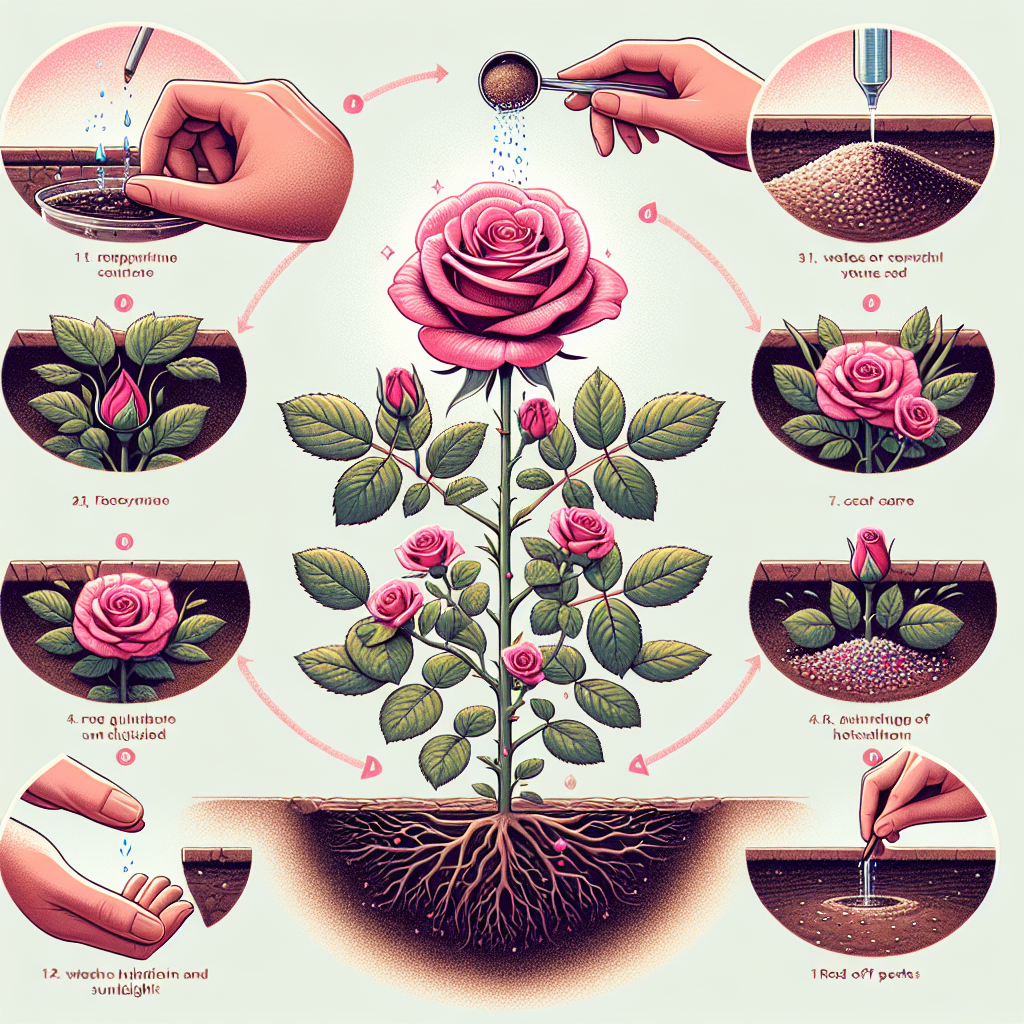
How to growth rose plant
How to Grow a Rose Plant: A Comprehensive Guide
The rose plant is not only a symbol of love and beauty but also a delightful addition to any garden. Whether you are a beginner or an experienced gardener, learning how to cultivate these exquisite flowers can be both rewarding and challenging. This article provides tips and techniques on nurturing your rose plants, from selecting the right variety to ensuring they bloom beautifully.
Choosing the Right Rose Variety
Before you can begin your journey of learning how to grow rose plants, it’s important to choose the right variety that suits your climate and garden space. Here are some popular rose types and their characteristics:
- Hybrid Tea Roses: Known for their large, beautiful blooms, these are perfect for cut flowers.
- Floribunda Roses: These produce clusters of flowers and are great for garden beds.
- Climbing Roses: Ideal for creating vertical displays, they can grow along trellises or fences.
- Miniature Roses: Small but vibrant, these are perfect for pots or small gardens.
- Knock Out Roses: These are disease-resistant and bloom repeatedly throughout the season.
Preparing the Planting Site
Once you've chosen your rose variety, the next step is preparing the site for planting. Here’s what you should consider:
- Sunlight: Roses require at least 6-8 hours of direct sunlight daily. Choose a spot that receives ample sunlight.
- Soil Quality: Well-draining soil rich in organic matter is essential. Aim for a pH of 6.0 to 6.8.
- Space Requirements: Depending on the variety, ensure there’s adequate space between each plant to promote air circulation.
A sufficient amount of sunlight and good air circulation are crucial for healthy rose plants.
Soil Preparation
Good soil is the foundation of your rose garden. Here’s how to prepare it:
- Testing the Soil: Conduct a soil test to determine pH and nutrient levels.
- Amend the Soil: Mix organic compost, well-rotted manure, or peat moss to enrich the soil.
- Drainage: If the soil is heavy clay, consider adding sand or perlite for improved drainage.
Planting Your Roses
Once your soil is prepared, it’s time to plant. Follow these steps for optimal planting:
- Timing: The best time to plant roses is during the early spring or fall.
- Digging Holes: Dig holes that are twice as wide and as deep as the rose plant’s root ball.
- Placement: Position the plant so that the graft union is at soil level.
- Backfill: Gently backfill the holes with the enriched soil, ensuring no air pockets remain.
- Watering: Water the plants thoroughly after planting to help settle the soil.
Caring for Your Rose Plants
To ensure your roses flourish, regular care is necessary. Here are key aspects to focus on:
Watering
Roses need consistent moisture. Here’s how to water properly:
- Water at the base of the plant to prevent fungal diseases.
- Deep watering once a week encourages deeper root growth.
- Adjust watering frequency based on weather conditions and soil moisture levels.
Fertilization
Provide nutrients to your roses for vigorous growth:
- Type of Fertilizer: Use a balanced fertilizer specifically formulated for roses.
- Application Timing: Fertilize in early spring when new growth begins and again in mid-summer.
- Follow Instructions: Always adhere to the recommended dosage to avoid over-fertilization.
Pruning
Pruning is essential for maintaining healthy plants:
- Prune in late winter or early spring before new growth starts.
- Remove dead, diseased, or crossing branches to improve airflow and sunlight penetration.
- Shape the plant to encourage a strong, open structure for optimum blooming.
Pest and Disease Management
Roses can be susceptible to various pests and diseases. Here’s how to manage them:
- Common Pests: Watch for aphids, spider mites, and whiteflies.
- Disease Prevention: Implement good air circulation and avoid overhead watering to reduce fungal issues.
- Natural Remedies: Use insecticidal soap or neem oil to manage pest infestations.
Encouraging Blooming
To achieve a vibrant display of flowers, follow these guidelines:
- Ensure adequate sunlight and avoid overcrowding plants.
- Provide consistent moisture, especially during the blooming period.
- Deadhead spent blooms regularly to encourage new growth.
Winter Care for Roses
Preparing your roses for winter is crucial for their survival. Here’s what to do:
- Mulching: Apply a thick layer of mulch to insulate the roots.
- Covering: In colder regions, consider covering the base of the plants with burlap or protective cloth.
- Watering: Ensure the plants are adequately watered before the ground freezes.
Conclusion: Enjoying Your Rose Garden
Learning how to growth rose plants takes time, patience, and dedication. With the right variety, care regimen, and ongoing monitoring for pests and diseases, you can enjoy the beauty and fragrance of your rose garden for many years. Remember to savor each moment in your garden, as cultivating roses is not just about the destination of beautiful blooms, but also the journey of nurturing and growth.
With the tips provided in this guide, you are well-equipped to embark on your rose-growing journey. Happy gardening!
```By Guest, Published on September 29th, 2024